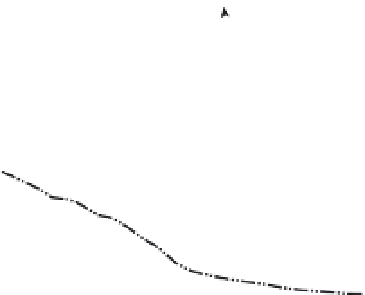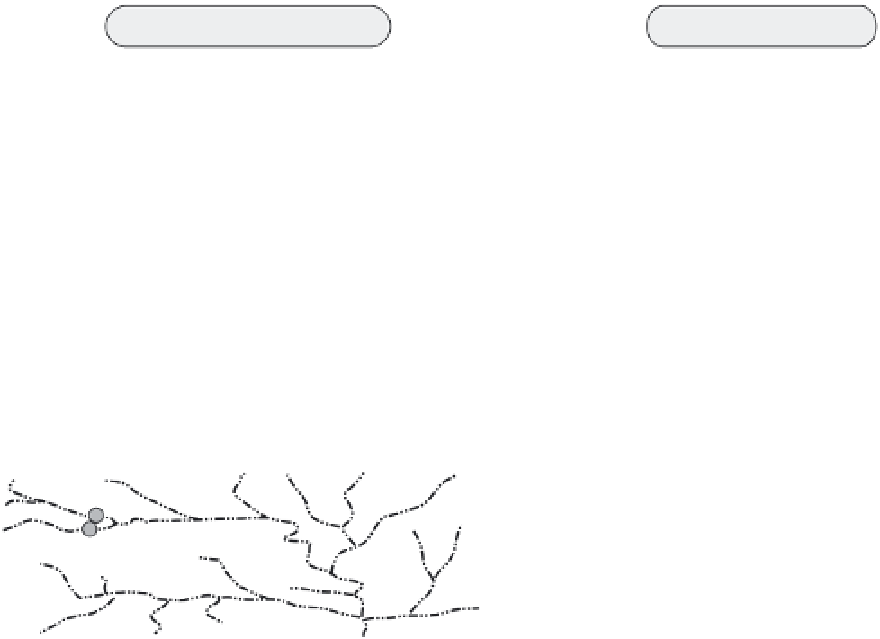Geology Reference
In-Depth Information
Migrating Knickpoint
Diferential Uplift
10
0
10
0
A
D
similar k
s
low k
s
high k
s
A
c
A
c
10
-1
10
-1
transition zone
high uplift
rate
knickpoint zone
low uplift rate
10
4
10
5
10
6
10
7
10
8
10
4
10
5
10
6
10
7
log drainage area (m
2
)
log drainage area (m
2
)
3
2
B
E
high uplift rate
400
adjusted reaches
migrating knickpoint
low uplift
rate
200
1
0
0
3
2
1
40
30
20
10
distance from mouth (km)
distance from mouth (km)
C
F
low uplift
rate
contour
high uplift rate
knickpoint propagation map
differential uplift map
Fig. 8.8
Migrating knickpoints versus zones of differential uplift.
A. In slope-area space, a knickpoint appears as an anomalous steepened reach separating reaches with similar
concavity and steepness indices,
k
s
. B. In profile, the steepened reach separates two adjusted reaches. C. In map
view, knickpoints may be located at similar elevations in any subregion within a larger catchment; and for nearby
catchments of similar sizes, knickpoints may be located a similar distance from the catchment mouth. Gray circles
(in both C and F) indicate steepened reaches. D. In slope-area space, steepened reaches can bridge between zones
with different steepness indices (indicative of different uplift rates). Note that, if the upstream area had a higher uplift
rate, the upstream reach should have the high
k
s
values, and a knickpoint (with steeper slopes, as in A) could separate
the reaches. E. In profile, the steepened reach may be broader and less well defined. F. In map view, the steepened
reaches may align or create a systematic pattern that is associated with a boundary between zones with different
uplift rates. Modified after Wobus
et al.
(2006c).
above the broader trend that defines overall
channel concavity. Based on several contrasts,
the signature of a migrating knickpoint can
sometimes be distinguished from a similarly
steepened reach that is due to differential uplift
(Wobus
et al
., 2006c). In slope-area space, a
knickpoint stands out as an anomaly that sepa-
rates reaches with similar steepness indices
(Fig. 8.8A), whereas for differential uplift, a
steepened reach can bridge between adjacent
reaches that have different steepness indices
(Fig. 8.8D). In a map view, knickpoints within a
given part of a larger catchment may occur at
similar elevations and be distributed in
analogous positions with respect to the mouth
of various tributaries (Fig. 8.8C). This pattern is
similar to that seen in the Waipaoa catchment
(Fig. 8.7B). In contrast, differential uplift is
more likely to create steepened reaches that
are aligned with each other, have weaker
associations with a particular position within a
tributary catchment, and are less associated with
a given elevation (Fig. 8.8F).
The mechanism of knickpoint formation and
rates of upstream migration in natural settings
have not been well documented, especially in


























































































































































